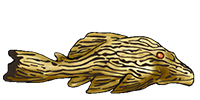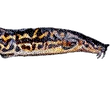- Jul 15, 02:18 by Dinyar
- Jul 14, 19:46 by jjphoto.dk
- Jul 13, 23:27 by Baardman
- Jul 13, 23:26 by Baardman
- Jul 13, 23:24 by Baardman
- Jul 13, 23:23 by Baardman
- Jul 13, 21:36 by louie.wang
- Jul 13, 21:35 by louie.wang
- Jul 13, 16:14 by Plecroix
- Jul 11, 05:18 by Silurus
- Jul 10, 23:00 by Silurus
- Jul 09, 06:47 by Silurus
- Jul 08, 22:44 by Silurus
- Jul 08, 22:44 by Silurus
- Jul 08, 15:32 by Koen
- Jul 06, 17:50 by NearlyJen
- Jul 05, 07:11 by Aquaddict
- Jul 05, 07:09 by Aquaddict
- Jul 02, 03:21 by ReefyKeefy
- Jun 30, 15:01 by Koen
- Jun 30, 15:00 by Koen
- Jun 30, 14:59 by Koen
- Jun 30, 14:59 by Koen
- Jun 30, 14:58 by Koen
- Jun 30, 14:58 by Koen
- Jun 30, 14:50 by Koen
- Jun 30, 14:49 by Koen
- Jun 25, 14:11 by Robeike
- Jun 24, 18:16 by bekateen
- Jun 20, 12:33 by naturalart
- Jun 19, 17:17 by NearlyJen
- Jun 18, 14:37 by Silurus
- Jun 18, 08:03 Pterocryptis subrisa by Sadit Khan
- Jun 18, 05:03 by Iamfish
- Jun 18, 05:03 by Iamfish
- Jun 17, 17:37 by NearlyJen
- Jun 12, 21:44 by Jools
- Jun 12, 17:24 by Iamfish
- Jun 05, 07:16 by diesel
- Jun 04, 12:43 by Catfish-ologist
- Jun 02, 03:47 by Hayklo
- Jun 02, 03:45 by Hayklo
Browse the full Image, Species, BLog, Aquaria, Wishlist, Spotter or My Cats updates!
Accurate info and multiple images of catfish species. We have 5,177 species, 20,536 images encompassing 56,387 populations in 6,636 registered aquaria. There's 1,830 breeding reports and 4,879 wishlists too. See also the catfish on stamps, habitat, underwater, video collections and all C, CW, L & LDA numbers.
A wide array of hundreds of informative catfish articles. There's something for everyone here, ranging from newbie essentials to specialist topics split across four sections - Species, Reproduction, Geography and 'Catfishology'. Dive in!
/siluriformes/loricariidae/hypoptopoma/sp%281%29/7.jpg) This month's featured species is Hypoptopoma sp. (1). Are you looking for in-depth on a particular species? Then check out the vast CotM Archives.
This month's featured species is Hypoptopoma sp. (1). Are you looking for in-depth on a particular species? Then check out the vast CotM Archives.
 A Chance Spawning of Chaetostoma sp. (L444) by Rob Torrens. Notes on an community tank chance spawning of the most common rubbernose or bulldog pleco.
A Chance Spawning of Chaetostoma sp. (L444) by Rob Torrens. Notes on an community tank chance spawning of the most common rubbernose or bulldog pleco.
Recent posts in the Forum
Jul 15, 07:48 Otolith morphometric analysis of North Bornean Ariidae by bekateen in Taxonomy & Science News. 21 views and 0 replies
Jul 13, 19:36 New Pseudomystus by Silurus in Taxonomy & Science News. 49 views and 1 reply
Jul 13, 15:10 My Public Aquarium: exhibit blues - how to make them? by Viktor Jarikov in Tank Talk. 1767212 views and 1712 replies
Jul 12, 06:34 Catfish Tetris?? by naturalart in Tank Talk. 177 views and 5 replies
Jul 12, 02:53 New trichomycterid genus by Silurus in Taxonomy & Science News. 88 views and 0 replies
Jul 11, 08:06 The Dissertations Sticky by bekateen in Taxonomy & Science News. 278084 views and 80 replies
Jul 11, 04:34 New Osteogaster by bekateen in Taxonomy & Science News. 88 views and 1 reply
Jul 10, 15:21 Pied synodontis eupterus by Heck in African Catfishes. 127 views and 0 replies
Jul 08, 14:22 New genus+4 new species of Heptapteridae by bekateen in Taxonomy & Science News. 437 views and 1 reply
Jul 07, 10:35 Man I Love Frogs by bekateen in Speak Easy. 837 views and 2 replies
Jul 07, 02:10 Pterocryptis phylogeography by Silurus in Taxonomy & Science News. 791 views and 0 replies
Jul 06, 22:48 Erethistes horai? No, E. minusculus - SPAWNED! by bekateen in Asian Catfishes. 13865 views and 38 replies
Jul 06, 16:59 Crapload of new Cambeva by bekateen in Taxonomy & Science News. 590 views and 1 reply
Jul 06, 01:29 Help with ID of new catfish by Jools in What is my catfish?. 1055 views and 7 replies
Jul 05, 07:07 New Oreoglanis by Silurus in Taxonomy & Science News. 2772 views and 3 replies
Jul 04, 18:55 New Olyra from India by Silurus in Taxonomy & Science News. 3077 views and 5 replies
Read curated catfish book reviews and other fishkeeping Book Reviews, written by aquarists for aquarists.
Featuring the relaxing Touch Pools and the Fantasy Catfish page. Buy unique merchandise from our online store. More pages about the webmaster, site map, credits, reviews, trophies and the catfish links page. Subscribe to our Announcement Forum. Learn about how YOU can contribute to the continual improvement of your favourite catfish site!





/siluriformes/bagridae/pseudomystus/breviceps/1.jpg)
/siluriformes/callichthyidae/hoplisoma/concolor/1.jpg)
/siluriformes/callichthyidae/aspidoras/sp%28cw126%29/1.jpg)
/siluriformes/loricariidae/hypancistrus/sp%283%29/1.jpg)
/siluriformes/callichthyidae/brochis(sc3)/sp%28c103%29/1.jpg)
/siluriformes/callichthyidae/brochis(sc3)/sp%28c156%29/1.jpg)
/siluriformes/loricariidae/peckoltia/compta/1.jpg)
/siluriformes/siluridae/silurichthys/marmoratus/1.jpg)
/siluriformes/siluridae/kryptopterus/baramensis/1.jpg)
/siluriformes/siluridae/kryptopterus/piperatus/1.jpg)
/siluriformes/siluridae/ompok/fumidus/1.jpg)
/siluriformes/siluridae/ompok/platyrhynchus/1.jpg)
/siluriformes/loricariidae/ancistrus/ranunculus/1.jpg)
/siluriformes/callichthyidae/hoplisoma/sp%28cw127%29/1.jpg)
/siluriformes/loricariidae/ancistrus/sp%284%29/1.jpg)
/siluriformes/mochokidae/synodontis/nigriventris/1.jpg)
/siluriformes/loricariidae/panaqolus/claustellifer/1.jpg)
/siluriformes/loricariidae/hypancistrus/yudja/1.jpg)
/siluriformes/callichthyidae/osteogaster/sp%28cw009%29/1.jpg)
/siluriformes/callichthyidae/hoplisoma/julii/1.jpg)
/siluriformes/callichthyidae/hoplisoma/cruziense/1.jpg)
/siluriformes/callichthyidae/hoplisoma/panda/1.jpg)
/siluriformes/callichthyidae/hoplisoma/trilineatum/1.jpg)
/siluriformes/callichthyidae/hoplisoma/sp%28cw111%29/1.jpg)
/siluriformes/sisoridae/erethistes/jerdoni/1.jpg)
/siluriformes/mochokidae/microsynodontis/polli/1.jpg)
/siluriformes/callichthyidae/gastrodermus/pauciradiatus/1.jpg)
/siluriformes/bagridae/mystus/punctifer/1.jpg)
/siluriformes/loricariidae/loricariichthys/ucayalensis/1.jpg)
/siluriformes/loricariidae/loricariichthys/stuebelii/1.jpg)
/siluriformes/callichthyidae/aspidoras/kiriri/1.jpg)
/siluriformes/loricariidae/loricariichthys/castaneus/1.jpg)
/siluriformes/callichthyidae/callichthys/serralabium/1.jpg)
/siluriformes/callichthyidae/hoplisoma/sterbai/1.jpg)
/siluriformes/callichthyidae/scleromystax/barbatus/1.jpg)